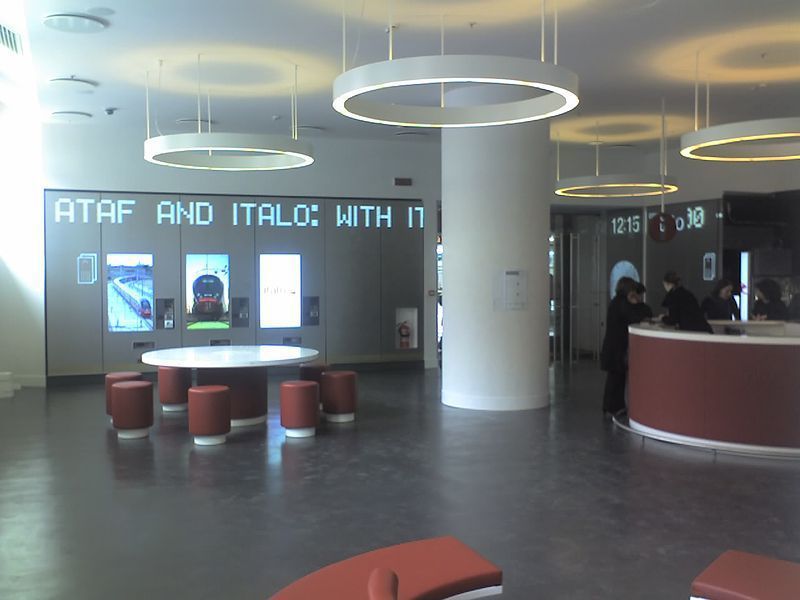Would you like to take the train from Florence to, say, Venice, as our Robert and Sienna did in Inferno?
Well, you are about to learn about an architectural gem that is often overlooked.
Construction of the railway network of the city of Florence began around 1840, with its first railway station being the Stazione Leopolda.
On February 3, 1848, a larger station was inaugurated near Piazza Santa Maria Novella Square. It was named Maria Antonia Station after the wife of the Grand Duke of Tuscany.
Compared to the current station, the original one was located so close to the church of Santa Maria Novella that it had to be overload.
Once the Grand Duchy was abolished, the name was changed to Santa Maria Novella Station (SMN). However, the structure itself remained unchanged until the 1930s.
In 1932, the city of Florence decided to modernize and enlarge the station, holding a public competition for the right to conduct the project. The competition was won by the “Tuscan group”, formed of famous architects, the first among which being Giovanni Michelucci.
This group would end up designing one of the most important works of Italian Rationalism. Through this style, theorized years after this realization, the structure of a work had to reflect its function. It is the first example in Italy of a station built according to the logic of modern functionality.
The expansion of Santa Maria Novella Station was an immediate success; however, some citizens were not satisfied, such as young intellectuals that met at the Caffe Le Giubbe Rosse in Piazza della Repubblica, intellectuals destined to become famous throughout Italy.
This station is therefore a masterpiece of 1930s Italian architecture.
Famous is the “glass waterfall” window that illuminates the whole station, particularly the beautiful ticket hall.
The compartment of the tracks, ensuring maximum breadth and vastness, is achieved without central support structures and is covered with copper and glass.
Upon entering the main gallery, one is attracted by the beautiful floor made from alternating bands of white and red marble.
The station complex also includes a restaurant and bar decorated, as was originally the case for whole station, with beautiful objects in the style of the 1930s.
Today, the station is very similar to the original structure, although a new subway commercial door was added in the 1980s starting from the inside of the station and the large underground parking lot.
Pictures by currybet and ign11











